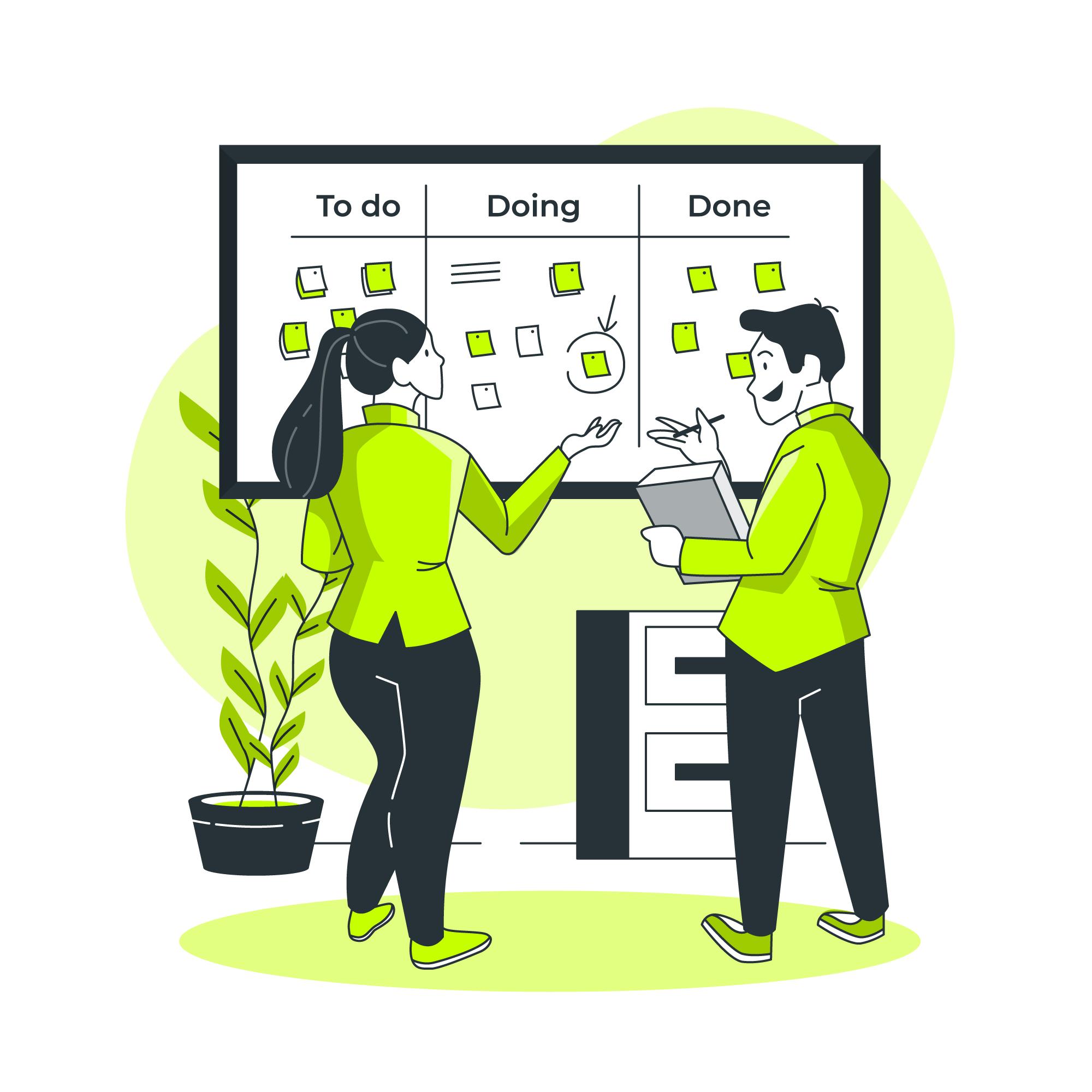Freelancers often face the complexities of managing diverse teams, which can lead to miscommunication, inconsistent work quality, and missed deadlines. These challenges can undermine project delivery and hinder client satisfaction, leaving freelancers feeling overwhelmed.
To navigate these difficulties, effective project management becomes essential. By implementing structured strategies that prioritize communication, define roles, and foster collaboration, freelancers can create a cohesive work environment that not only streamlines processes but also enhances creativity and productivity.
This proactive approach enables freelancers to thrive, ensuring that projects are delivered on time and to a high standard.
Understanding the Challenges
Managing freelancers introduces a myriad of challenges that can undermine project success if not addressed effectively.
Communication Gaps
Freelancers often operate remotely, leading to potential misunderstandings and miscommunications. The absence of face-to-face interaction can result in a disconnect between expectations and deliverables. Miscommunication can stem from:
-
Varying Communication Styles: Different freelancers may have distinct preferences for how they communicate, whether through email, messaging apps, or video calls.
-
Delayed Responses: Time zone differences can lead to lag in communication, which may hinder project momentum.
Diverse Work Styles
Each freelancer comes with their work habits and methodologies. This diversity, while beneficial, can also create inconsistencies. Some freelancers may be detail-oriented, while others might prioritize speed. Managing these differences is crucial for maintaining project quality and coherence.
Time Zone Differences
Coordinating efforts across multiple time zones can be a logistical nightmare. Scheduling meetings and ensuring timely updates become more complicated when team members are working at different hours.
To overcome this challenge, freelancers need to establish a clear communication plan that respects individual schedules while promoting timely collaboration.
Addressing these challenges requires robust project management strategies that emphasize clarity, structure, and proactive communication.
Also read: Mastering Project Management for Freelancers
Prioritizing Tasks and Deadlines
The cornerstone of effective project management lies in the ability to prioritize tasks and adhere to deadlines. Here are key strategies to ensure your projects remain on track:
Set Clear Objectives
Defining clear, measurable goals for the project is essential. Each objective should be specific, actionable, relevant, and time-bound (SMART). Break down larger goals into smaller, manageable tasks to provide clarity and direction.
Use a Task Management System
Adopting a task management tool can significantly enhance your project organization. Platforms like Trello, Asana, or ClickUp allow you to create boards or lists that visually represent task statuses. Consider these features:
-
Task Assignment: Assign tasks to specific freelancers with deadlines and priority levels.
-
Progress Tracking: Monitor the completion status and adjust workloads as necessary.
Implement a Timeline
Creating a comprehensive project timeline helps align the team. Use Gantt charts to outline deadlines and milestones, ensuring everyone understands their responsibilities and the overall project flow. Schedule regular reviews to adjust timelines based on project developments.
Also read: Project Management Demystified: A Freelancer’s Playbook
Measuring Success
Understanding how to measure success is vital for long-term project management effectiveness. Focus on the following key performance indicators (KPIs):
Quality of Work
Implementing a systematic evaluation process for the quality of deliverables is crucial. Consider peer reviews, client feedback, or quality assurance checks. Establish criteria that freelancers should meet, and provide constructive feedback to foster improvement.
Timeliness
Track the ability of freelancers to meet deadlines. Regularly assess completion rates and identify any recurring delays. This data not only highlights areas for improvement but also informs future project timelines.
Client Satisfaction
Client feedback is a critical metric for measuring project success. Utilize surveys, direct conversations, or feedback forms to gauge satisfaction levels. Questions should cover:
-
Overall satisfaction with the final deliverables
-
Communication effectiveness throughout the project
-
Likelihood of recommending your services
By integrating these metrics into your project evaluation, you foster a culture of accountability and continuous improvement.
Maintaining Accountability
Creating a culture of accountability is essential for ensuring that all freelancers are committed to their roles. Here are practical strategies to enhance accountability:
Define Roles and Responsibilities
Clearly outline each freelancer’s responsibilities from the outset. Use a RACI matrix (Responsible, Accountable, Consulted, Informed) to delineate who is responsible for specific tasks and who needs to be consulted or informed throughout the project.
Regular Check-Ins
Establish a routine for check-ins, whether weekly or bi-weekly. These meetings provide an opportunity to discuss progress, address challenges, and recalibrate expectations. Use this time to celebrate achievements and identify any areas needing additional support.
Use Accountability Tools
Leverage accountability software that tracks individual contributions and deadlines. Tools like Monday.com or TeamGantt can help visualize workloads and ensure that all freelancers are aware of their responsibilities.
Fostering a culture of accountability not only enhances productivity but also builds trust and commitment among team members.
Also read: Practical PM Skills to Enhance Work Efficiency
Integration with Tools
A seamless integration between project management and the tools freelancers commonly use can greatly enhance productivity. Here’s how to approach this:
Communication Platforms
Select communication tools that facilitate organized discussions and document sharing. Platforms like Slack or Microsoft Teams allow for categorized channels, making it easier to track conversations related to specific projects.
File Sharing Services
Using cloud-based file-sharing services, such as Google Drive or Dropbox, enables easy access to project files. Ensure that all freelancers have appropriate access permissions and establish a clear naming convention for files to avoid confusion.
Time Tracking Apps
Time tracking is essential for managing budgets and assessing productivity. Tools like Toggl or Harvest can help freelancers log their hours accurately, enabling you to monitor project costs and adjust plans accordingly.
By ensuring that your project management approach works in harmony with existing tools, you reduce friction and streamline processes.
Tracking Progress
To keep projects on track, implement robust progress-tracking methods. Consider the following strategies:
Visual Management Tools
Utilize Gantt charts or Kanban boards to visualize the progress of tasks. These tools provide a clear overview of what’s completed and what remains. Regularly update these visuals to reflect current statuses and identify potential bottlenecks.
Progress Reports
Establish a routine for progress reporting. This could involve shared documents where freelancers log their progress or regular status updates during check-in meetings. Encourage freelancers to share both successes and challenges to foster a transparent environment.
Milestone Tracking
Identify key milestones throughout the project and celebrate their completion. Recognizing achievements not only motivates freelancers but also provides clear markers of progress, helping to maintain momentum.
By employing these methods, you ensure that you can address any issues promptly and keep the project moving forward.
Handling Client Feedback
Integrating client feedback into the project management process is crucial for continuous improvement. Here’s how to do it effectively:
Establish Feedback Channels
Create structured channels for clients to provide input, whether through surveys, one-on-one meetings, or project management platforms. Use open-ended questions to encourage detailed feedback that goes beyond simple ratings.
Regular Review Sessions
Schedule periodic reviews with clients to discuss project developments and gather insights. Use these sessions to address any concerns and demonstrate responsiveness to client needs.
Incorporate Feedback Promptly
Act on client feedback quickly to demonstrate commitment to their needs. If clients express concerns about specific deliverables, prioritize addressing those issues to foster trust and satisfaction.
This proactive approach enhances client satisfaction and creates a collaborative environment that benefits freelancers.
Resource Management
Effective resource management is vital for maintaining project budgets and ensuring optimal productivity. Here are key strategies:
Budget Planning
Develop a detailed budget that accounts for each freelancer’s rates and projected hours. This budget should be transparent and communicated to all freelancers involved. Regularly review expenditures to ensure you remain within budgetary constraints.
Resource Allocation
Assign tasks based on each freelancer’s strengths and availability. Utilize a skills matrix to identify the best-fit freelancers for specific tasks, ensuring that the right resources are allocated effectively.
Monitor Expenses
Keep a close eye on expenditures to prevent budget overruns. Tools that offer budget tracking can help you maintain oversight of project costs, making it easier to adjust plans if needed.
By managing resources wisely, you ensure that projects remain financially viable and meet their objectives.
Success Stories
Sharing success stories can inspire and motivate freelancers. For example, a design agency that implemented structured project management practices saw a 30% increase in client retention. By clearly defining roles and establishing regular communication, they improved the quality of work and client satisfaction.
Case Study: Marketing Agency Transformation
Another compelling example comes from a marketing agency that struggled with high turnover rates among freelancers. By adopting structured project management practices, including regular feedback loops and performance evaluations, they transformed their approach. As a result:
-
Freelancer Retention: Increased by 40%, leading to a more stable team.
-
Project Quality: Improved, with client satisfaction ratings rising from 75% to 90%.
-
Revenue Growth: Overall project delivery times decreased, enabling the agency to take on more clients, resulting in a 25% revenue increase within six months.
These narratives highlight the tangible benefits of good project management, showcasing how it can transform freelance operations and lead to significant business growth.
Adapting Strategies
The flexibility of project management strategies is essential in the ever-changing freelance landscape. Here’s how to adapt effectively:
Assess Project Needs
Regularly evaluate the specific requirements of each project and adjust strategies accordingly. Freelancers should be proactive in identifying changes in client demands or team dynamics that may necessitate a shift in approach.
Be Open to Feedback
Encourage input from freelancers about what’s working and what’s not, and be willing to make changes based on their insights. This collaborative approach not only enhances project management practices but also fosters a sense of ownership among freelancers.
Stay Informed
Keep abreast of industry trends and tools that can enhance project management practices. Engage with professional networks, attend webinars, and participate in relevant workshops to gather new ideas and approaches.
By remaining adaptable, you can navigate the complexities of managing freelancers and continuously improve your processes.
Incorporating Feedback
Feedback is a powerful tool for enhancing project management. Consider implementing the following practices:
Regular Surveys
Conduct surveys for both freelancers and clients to gather insights on the project process. Use both quantitative (rating scales) and qualitative (open-ended) questions to capture comprehensive feedback.
Feedback Sessions
Schedule dedicated sessions to discuss feedback openly and brainstorm improvements. Creating a safe space for freelancers to voice their opinions encourages candid discussions.
Create Action Plans
Use feedback to develop actionable strategies for addressing issues and enhancing future projects. Share these plans with your team to ensure transparency and accountability.
By fostering an environment where feedback is valued and acted upon, you create a culture of continuous improvement that benefits everyone involved.
Also read: Effective Task Delegation Strategies
Conclusion
Mastering project management for freelancers involves understanding challenges, prioritizing tasks, measuring success, and fostering collaboration. By adopting effective strategies and remaining flexible, freelancers can successfully navigate the complexities of freelance work.
This proactive approach transforms managing freelancers from a daunting task into a rewarding experience, ultimately driving business growth and enhancing client satisfaction. By embracing the principles discussed, freelancers can create a thriving ecosystem that benefits both their businesses and the talented individuals they work with.
Pinrom offers the tools you need to streamline your project management and elevate your freelance operations.









